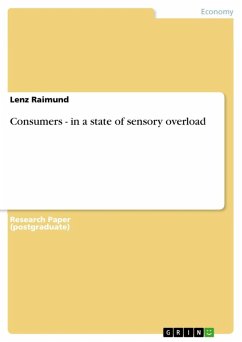Master's Thesis from the year 2006 in the subject Business economics - Offline Marketing and Online Marketing, grade: 1,0, University of Lugano (Faculties of communication sciences and economics), language: English, abstract: It is easier for consumers to consummate transactions when they are aware of sellers and, moreover, when they have confidence that sellers will deliver as promised. The reputation of sellers - or the brand - is one means by which businesses have traditionally promoted buyer awareness and bonded their promises to deliver (Klein & Leffler, 1981). Brands as "a collection of perceptions in the mind of the consumer" (Bates, 2006) are relevant for many choice and purchase decisions (Meffert, 2000). Consumers link a range of associations to a brand, from associations that include characteristics which can be perceived by the senses (e.g., an engine's horsepower, a product's design, or a brand's visual presence in visual or promotional campaigns) to characteristics associated with a brand's identity (origin, reputation, and personality); and from perceived rational benefits (the product and its functions, the transaction process, or the relationship between the consumer and the brand/supplier) to emotional benefits which consumers perceive to be related to a brand (self-expression, image transfer, or self-realization) (Perrey et al., 2003; see also Aaker, 1996). By delivering all this information to consumers, brands can facilitate consumers' purchase decisions. At the same time, information provided by sellers and by third parties can be an alternative mechanism for making consumers willing to undertake transactions. Through the Internet 1 , an ever-increasing amount of information from branded sellers, unbranded competitors, and third party information providers ("information intermediaries") is provided to consumers. Consumers are now able to obtain objective, trustworthy information on retailers' existence and reliability as well as products and services in real-time, at any time from virtually any place in the world - markets become increasingly transparent and information asymmetries between sellers and buyers decrease. The so empowered consumers may, as a consequence, become willing to patronize lesser-known, rather than branded, retailers (Deregatu, Rangaswamy & Wu, 2001). [...]
Dieser Download kann aus rechtlichen Gründen nur mit Rechnungsadresse in A, B, BG, CY, CZ, D, DK, EW, E, FIN, F, GR, HR, H, IRL, I, LT, L, LR, M, NL, PL, P, R, S, SLO, SK ausgeliefert werden.









